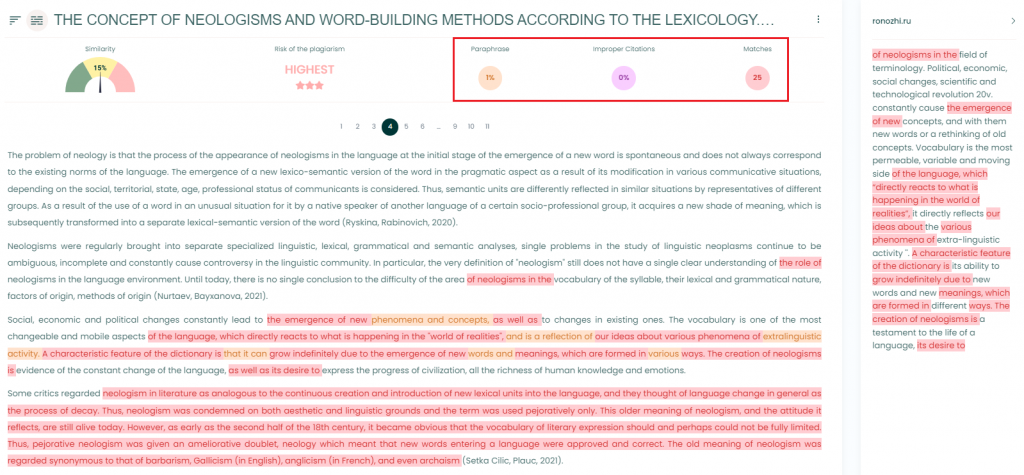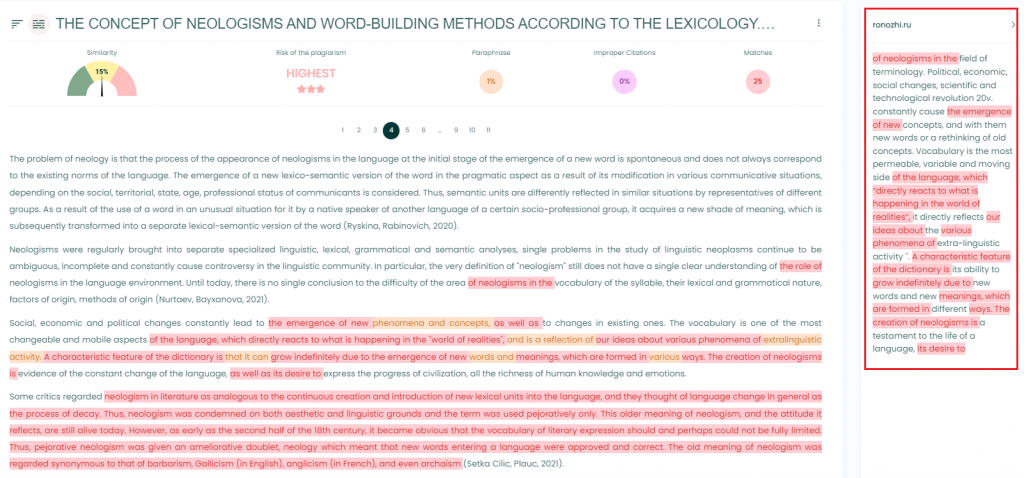Plagiarism is a serious concern in both academic and professional circles. With the advent of the internet, the act of copying another’s work and passing it off as your own has become increasingly easier. However, this unethical practice can have dire consequences, including academic penalties and loss of credibility. To help identify plagiarized material, plagiarism checkers have become an indispensable tool.
This article delves into the objectives, best practices, and guidelines for effectively using a plagiarism checker to ensure the originality of your documents.
Purpose and importance of plagiarism checkers
This section explores the different sides of plagiarism checkers, from their basic goals to useful tips on how to use them best. Additionally, we’ll cover what elements should be left out during a plagiarism assessment and why correct citation is important. Each of these topics holds significant importance for anyone utilizing a plagiarism checker in either academic or professional contexts.
Objectives of Plagiarism Checkers
The objectives of any plagiarism checker are to identify similarities in the text and ensure the document’s originality. This is particularly critical in academic assignments where the temptation to copy others’ work from online sources is high. As a result, plagiarism checkers have developed, and now most academic institutions and many business organizations consider using a plagiarism checker as a requirement for establishing the uniqueness of provided content.
When to use a plagiarism checker
You should utilize a plagiarism checker to review the document after completing approximately half of it. This practice empowers you to proactively address any errors highlighted by the checker in the remaining portion. Consequently, this approach not only reduces significant editing time but also ensures that the entire document is thoroughly checked rather than waiting until its completion.

Exclusions in plagiarism checking
When checking a document for plagiarism, consider the following exclusions:
- Exclude the bibliography. The plagiarism checker might flag the specific format of the bibliography as similar, especially if someone else has cited the same article or source in the same style.
- Exclude the title page. Title pages often include the topic, author names, and institutional affiliations, which could appear as similar results but are not actually plagiarized content.
Importance of correct citation
Proper citation is an essential aspect of using a plagiarism checker effectively. When you cite your sources accurately, the text in question will typically appear in green on the plagiarism checker’s report, signifying that you’ve correctly attributed the information to its original source. This is important because it helps you to maintain academic integrity and avoid accidental plagiarism.
On the other hand, if the cited text appears in a color other than green, it usually indicates that there may be an issue with your citation style or format. In such cases, you’ll need to review and revise the citation to ensure it meets the required style guidelines. Incorrect citations can lead to a misleading plagiarism report and may require further revisions to your document.
Understanding the results
Our plagiarism checker allows a user to upload a document on the site and evaluate the text from a massive set of databases that contain trillions of resources from around the globe including websites, books, and articles. The plagiarism checker evaluates each part of the text to check for similarities, paraphrasing, and cited text and provides the results based on this evaluation.
The following are the results of the plagiarism checker software, which can be used to correct the document using the guidelines:
- Similarity report. The similarity report provides a percentage of how much the uploaded text or document is similar to other documents found in the databases. The report allows the user to evaluate the highlighted text and if required change it to address the issues highlighted by the plagiarism checker.
- Paraphrase. The paraphrasing score indicates how much text is paraphrased using other’s work. A high score means that more text is written by paraphrasing other writer’s work and needs to be re-written. The text in the report is marked in orange color. Paraphrased text identified by the checker should be either properly cited or written again in order to rectify the error.
- Improper citation. If the color of the quoted text is purple, it indicates that either the citation is wrong or it has been plagiarized. The green color of the quoted text indicates the correct citing of the quoted text and does not necessarily need a revision.

Confidentiality and risks
To ensure the confidentiality and integrity of your document, please adhere to the following guidelines:
- Do not publish online. Avoid publishing your document on any online platform. Failure to do so will result in your document being flagged as plagiarized in future checks.
- Limited sharing. Only share the document with authorized individuals such as your supervisor or teacher. Sharing it broadly increases the risk of unauthorized publishing and future flags for plagiarism.
By following these guidelines, you can minimize the risks associated with plagiarism detection.
Understanding the source links
The output of the plagiarism checker also comes with links to the sources from where the matching text is found, which can provide the user with the details of the original source. This is to ensure that the user knows the source and if required can modify his or her document for correctness.

How much plagiarism is allowed
Different sources have varying opinions on the acceptable level of plagiarism. While most people would argue that zero plagiarism is the only acceptable answer, some educational institutions allow for limited levels of plagiarism in master’s and Ph.D. theses, sometimes up to 25%. However, this shouldn’t be the goal. Here are some points to consider:
- The primary aim of writing should be originality, not just passing a plagiarism checker.
- For a standard-sized document, paraphrasing and similarity matches should ideally not exceed 5%.
- In large documents, like those of 100 pages or more, the similarity index should remain below 2%.
Any text that exceeds these guidelines should be carefully reviewed and corrected to ensure originality.

Conclusion
| A plagiarism checker is a great tool for catching mistakes and keeping you from feeling awkward or ashamed about having your work look like it’s copied from someone else. When used correctly, this tool can flag key issues such as similarity to existing work, paraphrasing, improper citation, and text matching. Using the checker appropriately ensures that the document is original and conforming with copyright laws. Furthermore, the report generated by the plagiarism checker offers a valuable opportunity to demonstrate the document’s originality. |
